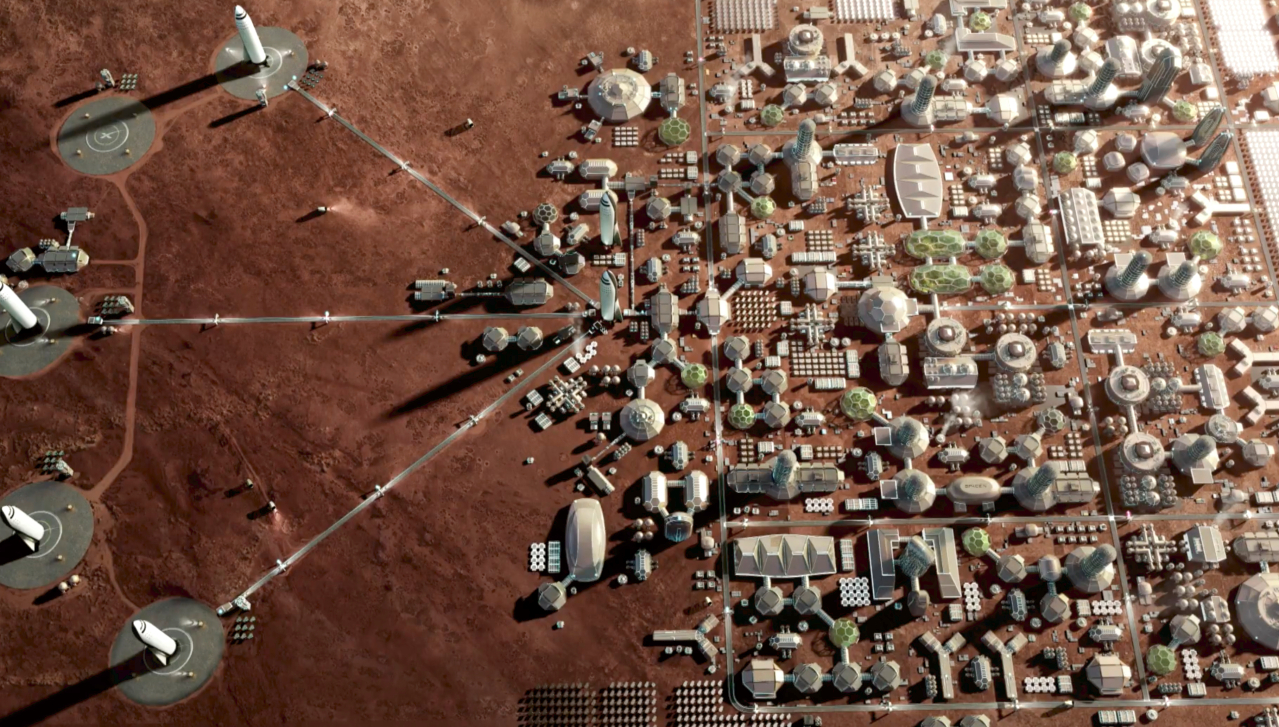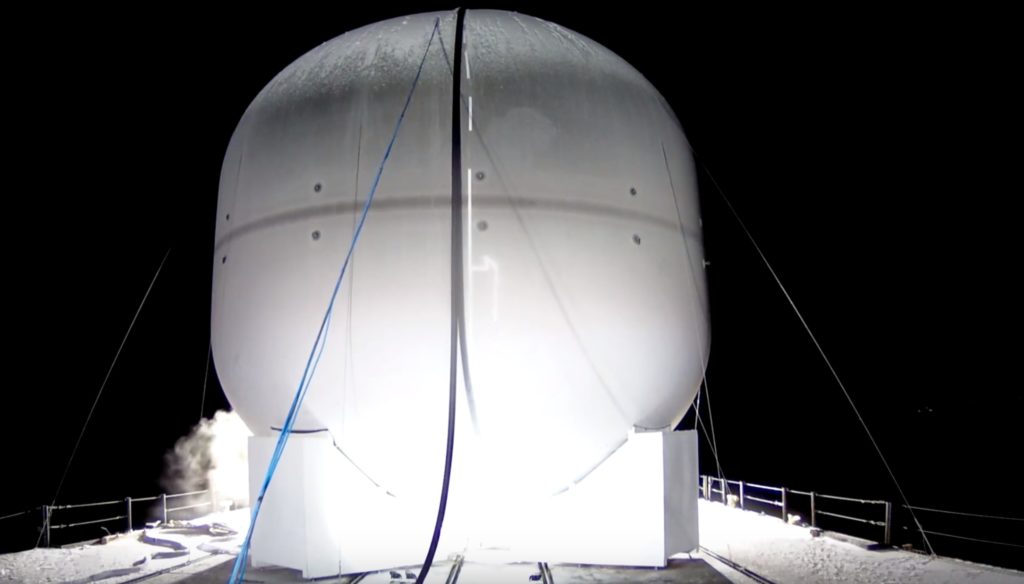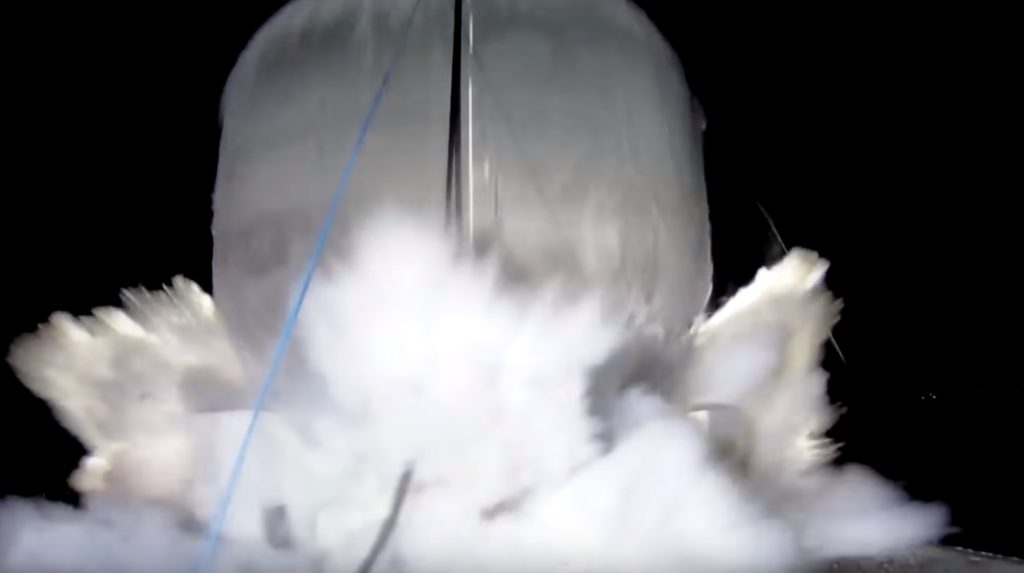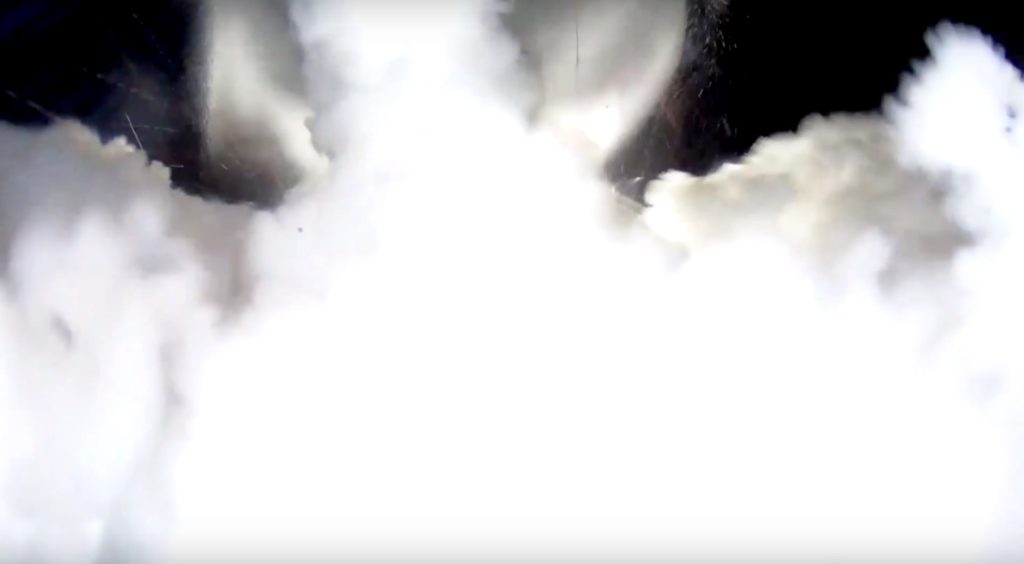

News
Elon Musk and SpaceX won’t be stopped along the road to Mars
If one is to take anything at all away from Elon Musk’s update to SpaceX’s planetary colonization strategy on September 29, it ought to be the tangible and undeniable progress the company has made with real, Mars-focused hardware development.
To take Musk at his word, the general atmosphere pervading the two relevant programs is one of extreme success and confidence. Raptor, the powerful methane-oxygen rocket engine intended to be the workhorse for any larger launch vehicle, has conducted dozens (42, to be specific) of successful hot fires at SpaceX’s McGregor, Texas testing facilities. These ranged from a handful of seconds all the way to 100 seconds in duration, and Musk made it explicitly clear that the only limiting factor to test duration was the size of the tanks of propellant available to fuel the engine. Of crucial importance is the fact that the engine being tested in Texas is a subscale prototype, and is not representative of the final engine. However, SpaceX has since shrunk the final target for operational Raptors, and this means that the current scale is not far off from the final thrust figure. The prototype Raptor is believed to have a thrust of approximately 1,000 kN (Kilonewtons), with slides from Musk’s 2017 presentation pointing to a full scale thrust of 1700 kN, far closer to becoming real than the 3,000 kN figure given at the 2016 IAC.
SpaceX has completed over 1,200 seconds of firing across 42 main Raptor engine tests. pic.twitter.com/EhxbPjd8Cj
— SpaceX (@SpaceX) September 29, 2017
Possibly even more significant is the reported success SpaceX has had with the construction and stress testing of a full-scale carbon fiber liquid oxygen tank, which was tested to a very eventful destruction on Washington state’s Puget Sound. Fans closely followed this series of tests, but information was scarce and the general consensus was that the tank had failed unintentionally during those tests. The fact that Musk claimed that the 12 meter diameter tank was “successfully tested” at high pressures, as well as the confidence he expressed about a uniquely capable “carbon fiber matrix”, suggest that SpaceX have leaped over one of biggest potential hurdles of their larger vehicle plans. Carbon fiber propellant tanks have the potential to make rockets significantly lighter and thus more efficient, particularly if no internal liner of metal is needed to ensure the safety of those carbon fiber tanks. One might remember the difficulties SpaceX had with supercool liquid oxygen, culminating in the Amos-6 mishap that saw carbon fiber helium tanks clash with SpaceX’s then-new supercooled propellant procedures.
- SpaceX’s massive carbon fiber tank being tested on a barge. (SpaceX)
- The tank made a premature attempt to reach orbit as it exploded. (SpaceX)
- Musk said that it flew 300 feet in the air in the controlled failure. (SpaceX)
Through many challenging mistakes, SpaceX has learned the hard way that extra care must be taken when mixing carbon fiber and liquid oxygen. The telltale sign that SpaceX has, however, successfully learned from those mistakes can be found in the company’s aspiration to begin construction of the first BFR cargo ship as early as April of 2018, barely six months from today. Time will tell if they can maintain that aggressive schedule and launch two Mars-bound cargo ships in 2022. The company’s incontrovertible success with the development of Raptor engines and carbon fiber propellant tanks bode extremely well for the future of their planetary colonization efforts.

Elon Musk
Elon Musk’s X will start using a Tesla-like software update strategy
The initiative seems designed to accelerate updates to the social media platform, while maintaining maximum transparency.

Elon Musk’s social media platform X will adopt a Tesla-esque approach to software updates for its algorithm.
The initiative seems designed to accelerate updates to the social media platform, while maintaining maximum transparency.
X’s updates to its updates
As per Musk in a post on X, the social media company will be making a new algorithm to determine what organic and advertising posts are recommended to users. These updates would then be repeated every four weeks.
“We will make the new 𝕏 algorithm, including all code used to determine what organic and advertising posts are recommended to users, open source in 7 days. This will be repeated every 4 weeks, with comprehensive developer notes, to help you understand what changed,” Musk wrote in his post.
The initiative somewhat mirrors Tesla’s over-the-air update model, where vehicle software is regularly refined and pushed to users with detailed release notes. This should allow users to better understand the details of X’s every update and foster a healthy feedback loop for the social media platform.
xAI and X
X, formerly Twitter, has been acquired by Elon Musk’s artificial intelligence startup, xAI last year. Since then, xAI has seen a rapid rise in valuation. Following the company’s the company’s upsized $20 billion Series E funding round, estimates now suggest that xAI is worth tens about $230 to $235 billion. That’s several times larger than Tesla when Elon Musk received his controversial 2018 CEO Performance Award.
As per xAI, the Series E funding round attracted a diverse group of investors, including Valor Equity Partners, Stepstone Group, Fidelity Management & Research Company, Qatar Investment Authority, MGX, and Baron Capital Group, among others. Strategic partners NVIDIA and Cisco Investments also continued support for building the world’s largest GPU clusters.
News
Tesla FSD Supervised wins MotorTrend’s Best Driver Assistance Award
The decision marks a notable reversal for the publication from prior years, with judges citing major real-world improvements that pushed Tesla’s latest FSD software ahead of every competing ADAS system.

Tesla’s Full Self-Driving (Supervised) system has been named the best driver-assistance technology on the market, earning top honors at the 2026 MotorTrend Best Tech Awards.
The decision marks a notable reversal for the publication from prior years, with judges citing major real-world improvements that pushed Tesla’s latest FSD software ahead of every competing ADAS system. And it wasn’t even close.
MotorTrend reverses course
MotorTrend awarded Tesla FSD (Supervised) its 2026 Best Tech Driver Assistance title after extensive testing of the latest v14 software. The publication acknowledged that it had previously criticized earlier versions of FSD for erratic behavior and near-miss incidents, ultimately favoring rivals such as GM’s Super Cruise in earlier evaluations.
According to MotorTrend, the newest iteration of FSD resolved many of those shortcomings. Testers said v14 showed far smoother behavior in complex urban scenarios, including unprotected left turns, traffic circles, emergency vehicles, and dense city streets. While the system still requires constant driver supervision, judges concluded that no other advanced driver-assistance system currently matches its breadth of capability.
Unlike rival systems that rely on combinations of cameras, radar, lidar, and mapped highways, Tesla’s FSD operates using a camera-only approach and is capable of driving on city streets, rural roads, and freeways. MotorTrend stated that pure utility, the ability to handle nearly all road types, ultimately separated FSD from competitors like Ford BlueCruise, GM Super Cruise, and BMW’s Highway Assistant.
High cost and high capability
MotorTrend also addressed FSD’s pricing, which remains significantly higher than rival systems. Tesla currently charges $8,000 for a one-time purchase or $99 per month for a subscription, compared with far lower upfront and subscription costs from other automakers. The publication noted that the premium is justified given FSD’s unmatched scope and continuous software evolution.
Safety remained a central focus of the evaluation. While testers reported collision-free operation over thousands of miles, they noted ongoing concerns around FSD’s configurable driving modes, including options that allow aggressive driving and speeds beyond posted limits. MotorTrend emphasized that, like all Level 2 systems, FSD still depends on a fully attentive human driver at all times.
Despite those caveats, the publication concluded that Tesla’s rapid software progress fundamentally reshaped the competitive landscape. For drivers seeking the most capable hands-on driver-assistance system available today, MotorTrend concluded Tesla FSD (Supervised) now stands alone at the top.
News
Elon Musk’s Grokipedia surges to 5.6M articles, almost 79% of English Wikipedia
The explosive growth marks a major milestone for the AI-powered online encyclopedia, which was launched by Elon Musk’s xAI just months ago.

Elon Musk’s Grokipedia has grown to an impressive 5,615,201 articles as of today, closing in on 79% of the English Wikipedia’s current total of 7,119,376 articles.
The explosive growth marks a major milestone for the AI-powered online encyclopedia, which was launched by Elon Musk’s xAI just months ago. Needless to say, it would only be a matter of time before Grokipedia exceeds English Wikipedia in sheer volume.
Grokipedia’s rapid growth
xAI’s vision for Grokipedia emphasizes neutrality, while Grok’s reasoning capabilities allow for fast drafting and fact-checking. When Elon Musk announced the initiative in late September 2025, he noted that Grokipedia would be an improvement to Wikipedia because it would be designed to avoid bias.
At the time, Musk noted that Grokipedia “is a necessary step towards the xAI goal of understanding the Universe.”
Grokipedia was launched in late October, and while xAI was careful to list it only as Version 0.1 at the time, the online encyclopedia immediately earned praise. Wikipedia co-founder Larry Sanger highlighted the project’s innovative approach, noting how it leverages AI to fill knowledge gaps and enable rapid updates. Netizens also observed how Grokipedia tends to present articles in a more objective manner compared to Wikipedia, which is edited by humans.
Elon Musk’s ambitious plans
With 5,615,201 total articles, Grokipedia has now grown to almost 79% of English Wikipedia’s article base. This is incredibly quick, though Grokipedia remains text-only for now. xAI, for its part, has now updated the online encyclopedia’s iteration to v0.2.
Elon Musk has shared bold ideas for Grokipedia, including sending a record of the entire knowledge base to space as part of xAI’s mission to preserve and expand human understanding. At some point, Musk stated that Grokipedia will be renamed to Encyclopedia Galactica, and it will be sent to the cosmos.
“When Grokipedia is good enough (long way to go), we will change the name to Encyclopedia Galactica. It will be an open source distillation of all knowledge, including audio, images and video. Join xAI to help build the sci-fi version of the Library of Alexandria!” Musk wrote, adding in a later post that “Copies will be etched in stone and sent to the Moon, Mars and beyond. This time, it will not be lost.”











